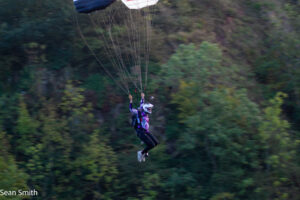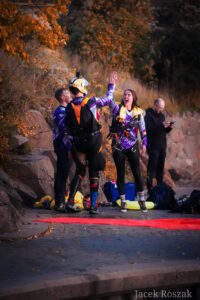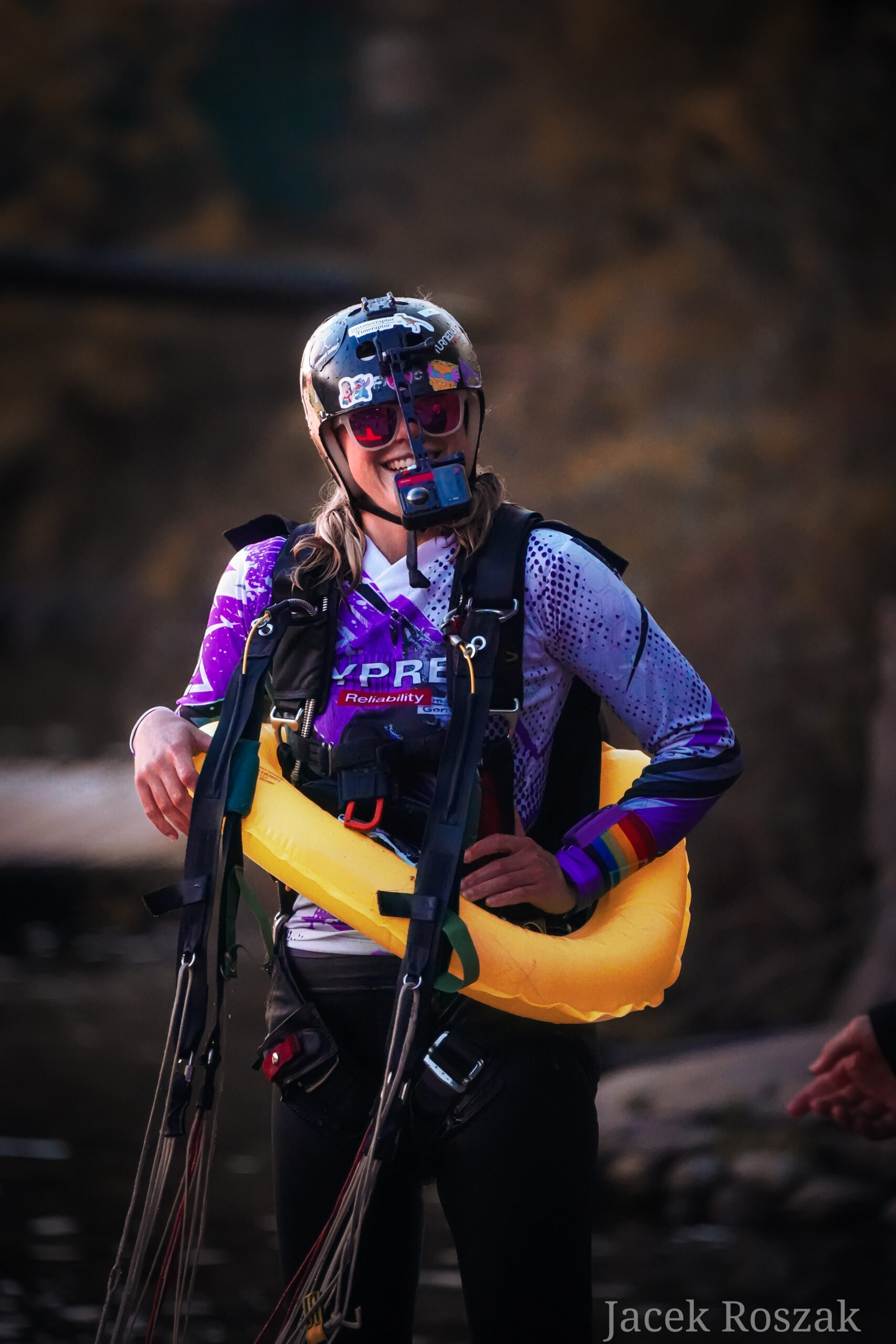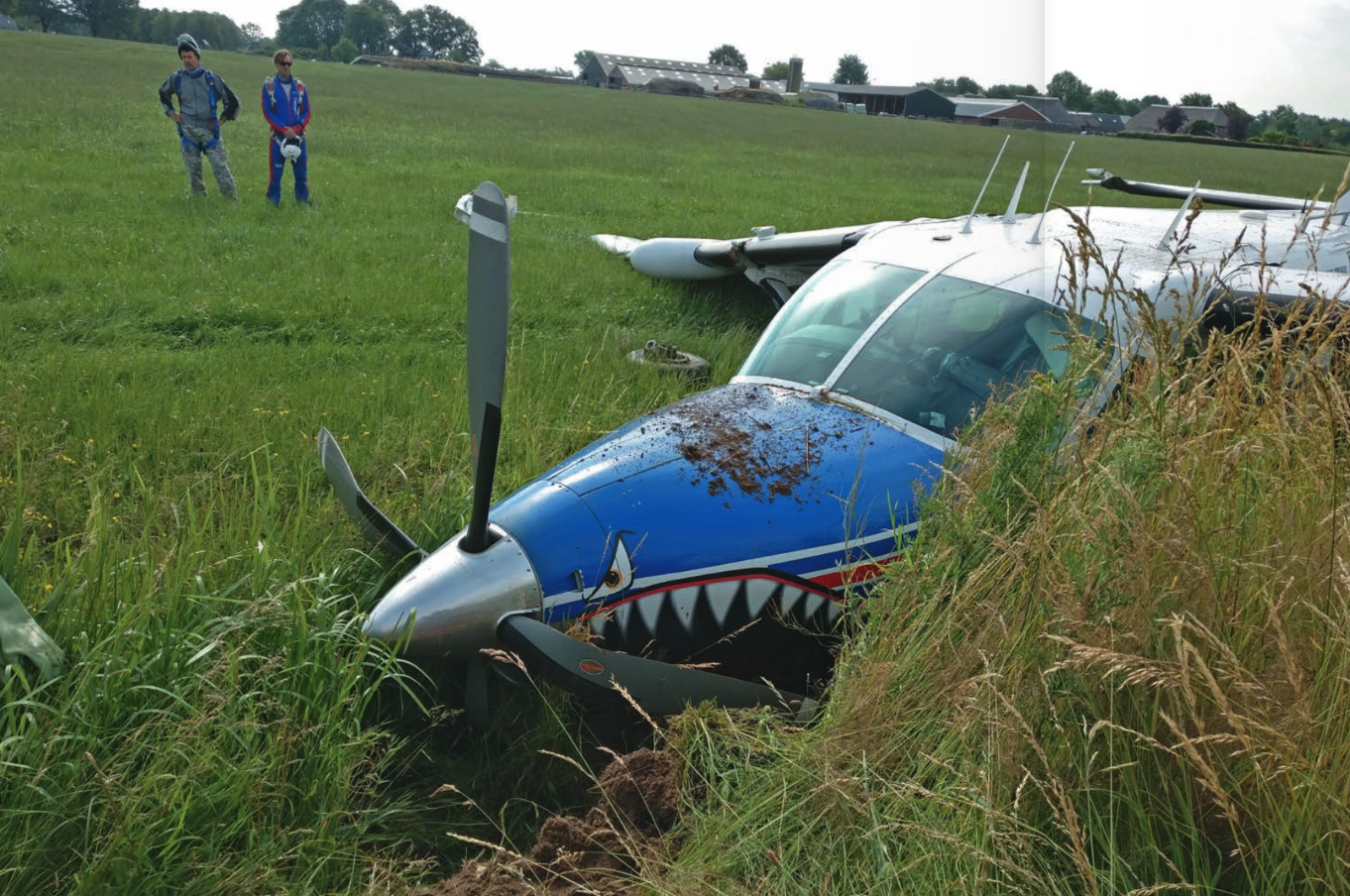By Joel Strickland
When presented with the opportunity to join a water jump back in September, my initial instinct was to stay well clear of it. This is because in June of 2018 I cut away from underneath a functioning parachute into a body of water, and died.
I still don’t know why.
I was unconscious in a lake in Missouri for long enough to drown. I don’t remember being dragged onto the boat. The end result was a concussion, a couple of cracked bits of skeleton, and a procedure on my small intestine that ultimately meant a week in hospital. It was rough, for a bunch of reasons, most of all the needlessness.
Two weeks later, in the middle of the kind of sudden and brutal storm you find in the American midsummer, an aquatic vehicle full of tourists sank in the same lake and 17 people lost their lives. This quickly made my self-pity about the whole thing seem very selfish and stupid.
Spend enough time in the sport and you’ll pick up an injury here and there, and will be around others who do or have done the same. It’s pretty flimsy to state that going through an accident and rehab makes you a safer and more responsible skydiver, and when I tried to do so my partner at the time rightly dismissed it as silly twaddle.
It is not necessary to spend a week in the hospital to learn some humility.

INSURANCE
When I contacted the insurance department back at the hospital in Wisconsin to ask how to pay them the £6,000 my provider had presented as the settlement amount, the nice lady on the other end openly laughed in my face. She politely informed me that the total was just short of a hundred thousand dollars.
America is a baffling place at the best of times. Even with insurance that ultimately covered everything, it took more than four years until the threateningly worded emails finally stopped, and I stopped worrying about the chances of admin problems while trying to visit the USA again.
After some uncertainty following Brexit and throughout Covid, it’s now once again straightforward to buy insurance that covers skydiving – for any number of jumps, in any number of countries, and for both medical and third-party liability above even the most demanding and scrutinous of national associations.
Spending time in any medical facility is no fun and best avoided. While even the fanciest extreme sports insurance package will not stop you from getting hurt, being both broken and in a shockingly deep financial hole are not two things that mix well. The first few occasions the internet had a whip-round for someone it was cute, but every time this happens it creates another hairline crack in the idea of absolute personal responsibility while engaging in risky adventures.
It is just a few jumps. I am not doing anything dangerous. I have done it hundreds of times. I won’t crash.
If you are British, own a parachute and can buy jump tickets, you can afford insurance.

CHECK YOUR HEAD
I’m far from thinking I am an appropriate human being to start crowing about mental health or posting platitudinous motivational poppycock on the internet, but if there is something I have learned – from both personal experience and proximity to others – is that while trying to balance the peaks and troughs of one’s existence with the nature of and access to gradually escalating risk, you don’t have to be actively seeking a way out to neglect proper practices of sticking around.
The emotional rewards of pushing hard at a sport you are passionate about can be highly intoxicating, but just as waves in the ocean can meet to cancel each other out, they can also congregate and escalate.
Adding a quick self-awareness check into your process might save your life one day.

PRIORITIES
Six of us jumped into Stoney Cove and it went great.
This is largely due to the efforts of a bunch of people that aren’t me. Any skydiving project for autumnal England is going to be a maybe with the weather, and while our first try was promising enough to get everyone to the dropzone, it played out at the dubious end of marginal. Holes in the cloud cover at 2,600ft made it technically possible, but would have us crossing the line from doing a thing for fun to squeezing it out for the other reasons.
My work in the skydiving industry means there is a lot of value in special projects like this, plus anything that involves additional effort with ground crew, transport (and in this case two boats with crew) puts pressure on getting it done. We are lucky that we can choose, ultimately deciding as a group that the risk-versus-reward equation was wrong. We could have gone, and possibly got it done, but the whole show would have been pretty tense and kind of scary – and while the media might still be good, the actual story would be one of compromised ideals.
If something being fun is not at the top of the list, what are we doing?
We gave it two weeks and got lucky: the sun came out, and the work and the patience paid off. Based on what happened last time, I didn’t tell anyone I was going to do this – waiting instead until I had not made a massive mess of things.

GO TEAM
Innhopps are an exciting part of our sport, with a high demand that people are prepared to travel and pay for. For various political and practical reasons, our densely packed little island has been at risk of being left behind, dragging its feet behind other countries prepared to give skydivers a bit more rope to get things right or wrong on their own terms. Recently, the owners, staff and community of Skydive Langar have proven that it is entirely possible to plan and execute projects like this, pulling together each proper element and ticking every box required.
Helping to normalise the process for display jumps is big step forward for British Skydiving and its relevance in the modern sport.
Good work everyone, and thanks.
Want to find more stories like this? Download the official Skydive the Mag app on either apple or android. Don’t want to download? Don’t worry. You can read the online version here.





